The future Balenciaga chooses to move hearts quietly and lastingly.

Photo from Balenciaga
Balenciaga has opened a new chapter. On the evening of October 4, local time, the French luxury house presented its Summer 26 collection—the first under new creative director Pierpaolo Piccioli, following Demna's departure. The show took place at 40 Rue de Sèvres, Kering Group's Paris headquarters.
The venue carried a sense of continuity. Just three months earlier, Demna had staged a retrospective exhibition there, showcasing his creations from 2015 to 2025—his summation and farewell. Yet Balenciaga's story continues, and now Pierpaolo Piccioli begins his chapter from the very same address.
Even before the show, anticipation had reached fever pitch. The stark contrast between the two designers' aesthetics—Demna's radical subversion and Pierpaolo Piccioli's romantic elegance—set the stage for one of fashion's most closely watched transitions in years.
Over the past decade, Demna fused streetwear and haute couture with an unmistakable air of rebellion, turning Balenciaga into a mirror of contemporary society and its contradictions. His sharp critique of modern culture gave the brand a unique, avant-garde edge. Pierpaolo Piccioli, by contrast, is known for his refined humanism—his vision more poetic, emotional, and in many ways closer to Cristóbal Balenciaga's original couture spirit. Both share a reverence for craftsmanship, but where Demna's critique was external and societal, Pierpaolo Piccioli's reflection is inward and empathetic.
Observers wondered how Pierpaolo Piccioli would navigate Demna's heavy imprint while recalibrating the haute couture DNA left by Cristóbal Balenciaga, and how he would carve out a path that is distinctly his own.
Pierpaolo Piccioli had already hinted at his approach. When his appointment was announced, he told Vogue Business that honoring his predecessors—including Demna—was essential, describing the transition as "more a passing of the torch than a game of chairs."

The debut show's looks carried echoes of previous Balenciaga eras—not only from Cristóbal and Demna, but also from Nicolas Ghesquière, who defined the brand's ready-to-wear legacy in the late 1990s and 2000s.
In the opening looks, models wore butterfly-shaped sunglasses—an immediate nod to Demna's futuristic accessories. Everyday items like T-shirts and jeans, which Demna had elevated into couture, appeared again, though reinterpreted with softer tailoring and an elegant silhouette. Their restrained presence suggested Pierpaolo Piccioli's respect for Demna's vision: reinvention born from the ordinary.

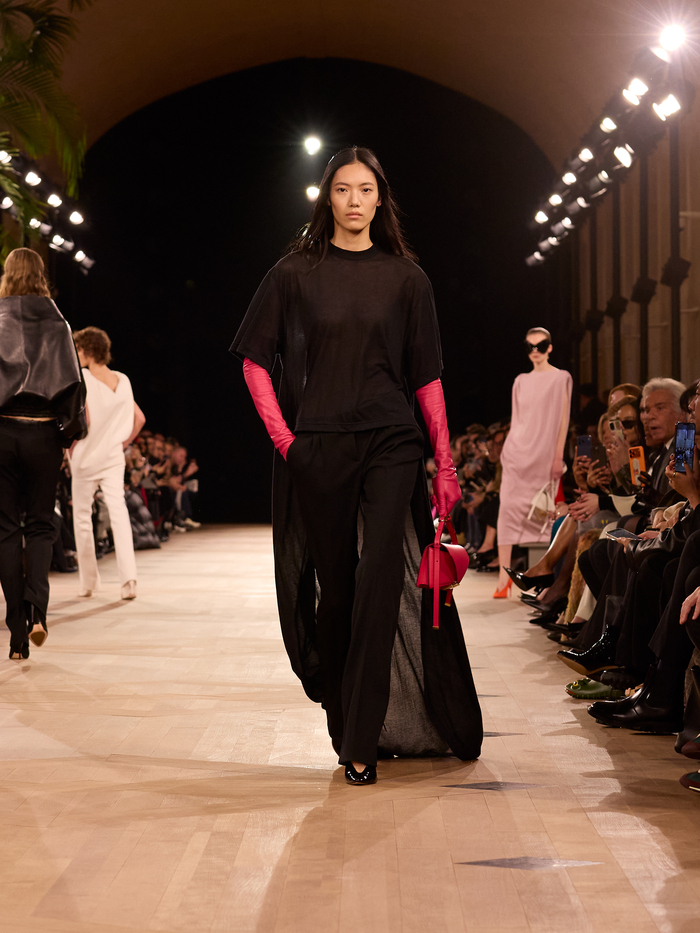
Reaching further back, tributes to Nicolas Ghesquière were equally clear. Cropped jackets in several ensembles referenced Ghesquière's Spring/Summer 2013 collection, which popularized the midriff-baring silhouette. Equestrian caps and a green floral knit dress drew inspiration from his Fall/Winter 2006 and Spring/Summer 2008 collections, respectively. The iconic Le City "motorcycle bag," introduced under Ghesquière, also made its return.
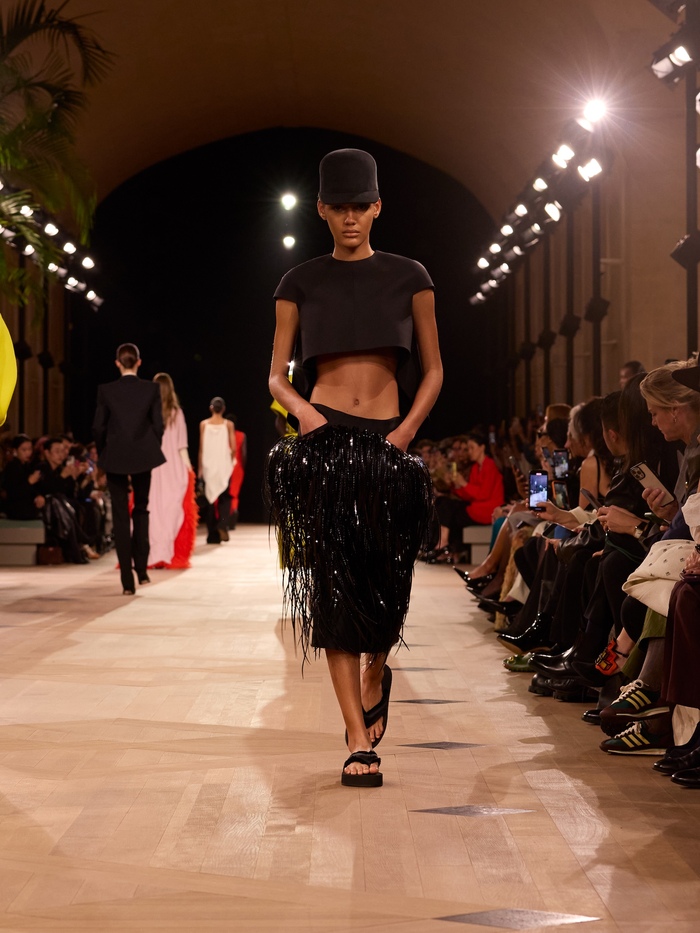

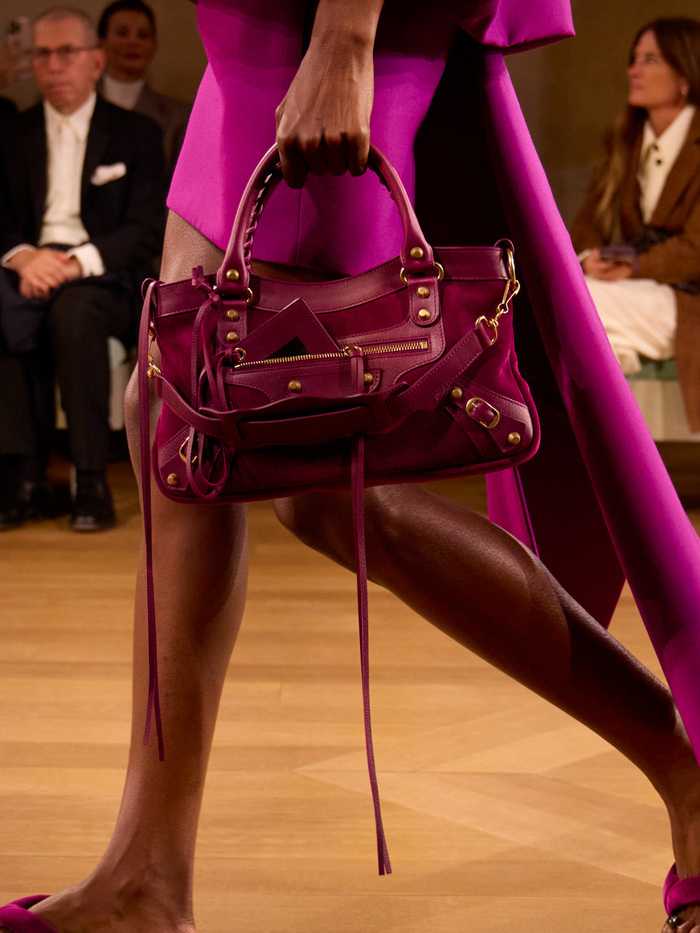
But the deepest conversation was with Cristóbal Balenciaga.
Pierpaolo Piccioli revisited the house's most iconic shapes—reviving the black sac dress, the voluminous balloon dress, and reinterpretations of the envelope dress, baby doll dress, infanta dress, and cocoon coat. Yet these were not nostalgic replicas. Through modern proportions and fluid materials, Pierpaolo Piccioli breathed new life into Cristóbal's sculptural forms—creating a dialogue that spanned decades and looked toward the future.
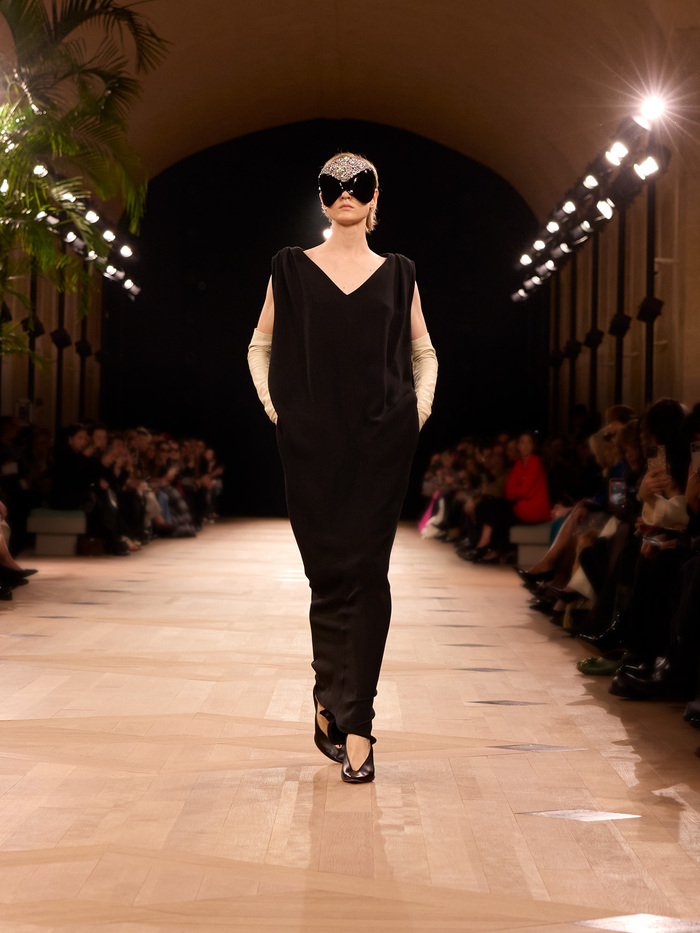

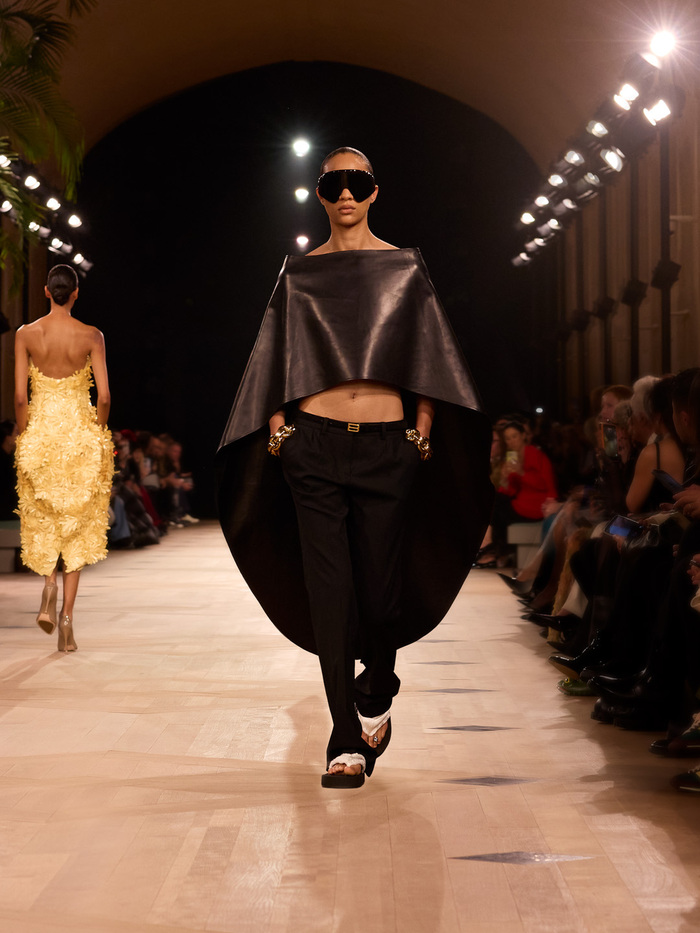
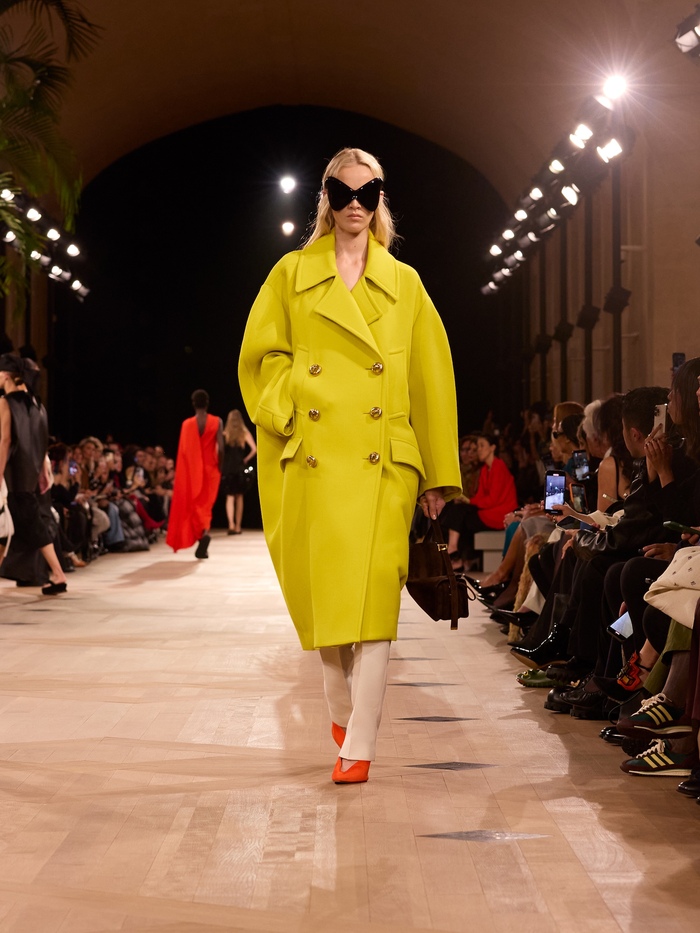

One of Pierpaolo Piccioli's key innovations lay in rebalancing those classic proportions within everyday garments—T-shirts, leather jackets, denim, twill trousers, and knitwear. Some shirts, for instance, were cut with the sweeping lines of Cristóbal's one-seam bridal gown, their backs lifting away from the body to create volume and motion.
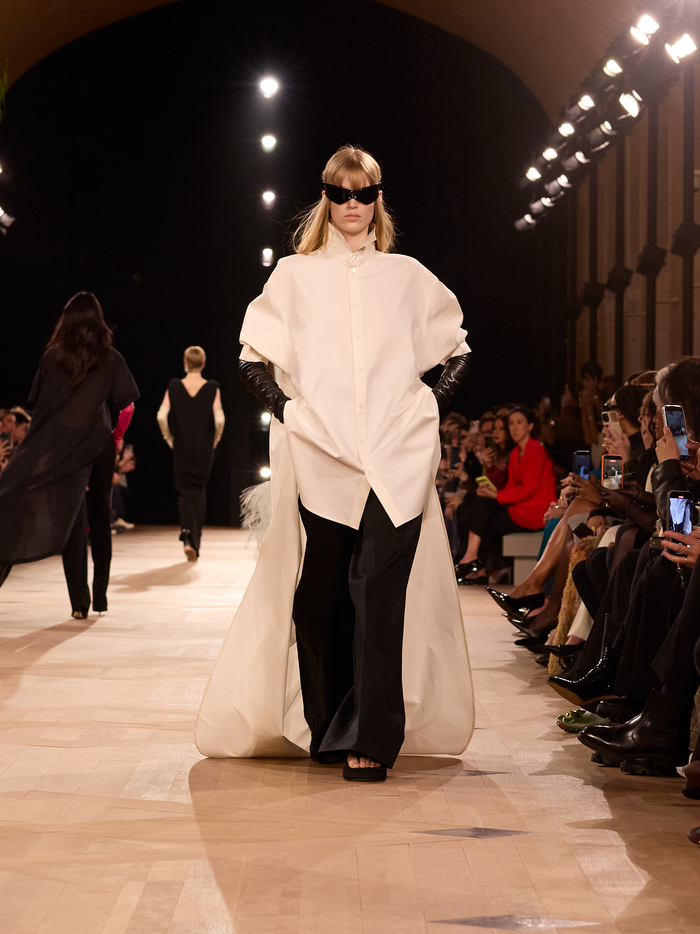
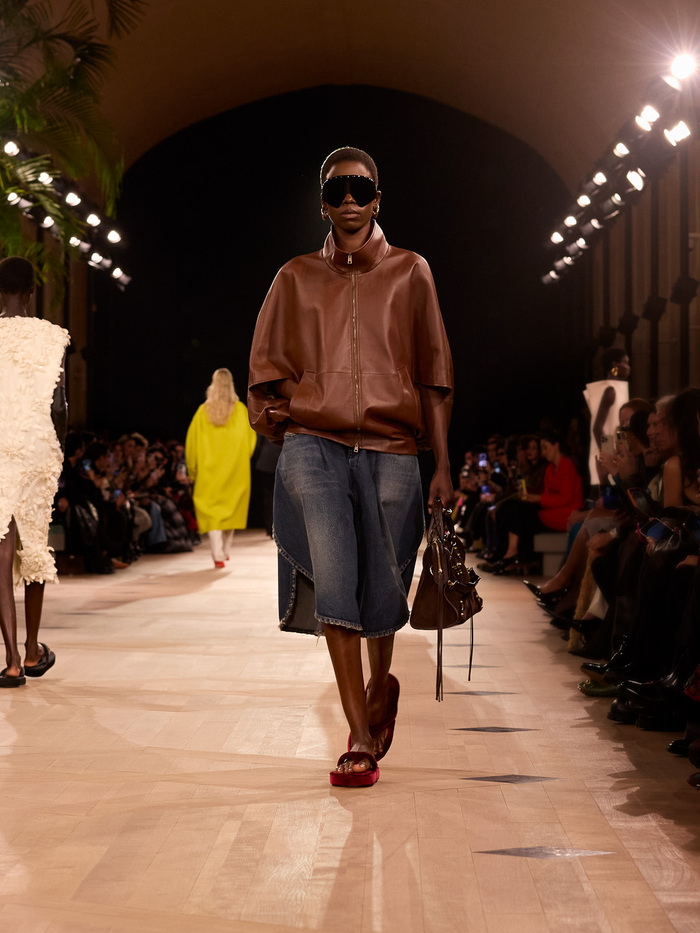
Color played a crucial role, too. Against a palette of black and white, Pierpaolo Piccioli introduced measured flashes of red, yellow, violet, and green—controlled yet joyful, unmistakably his.
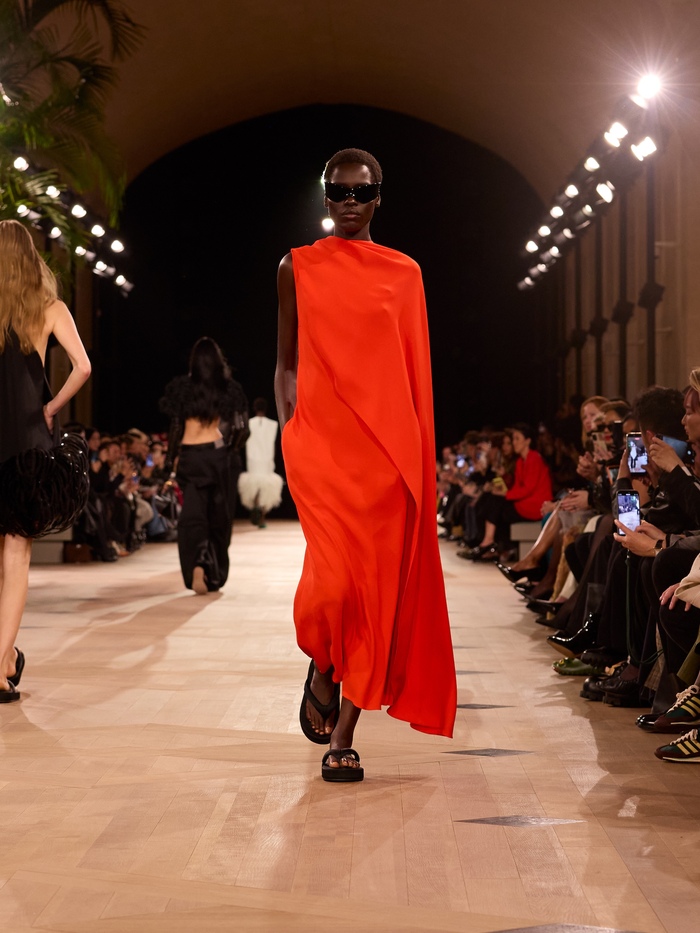

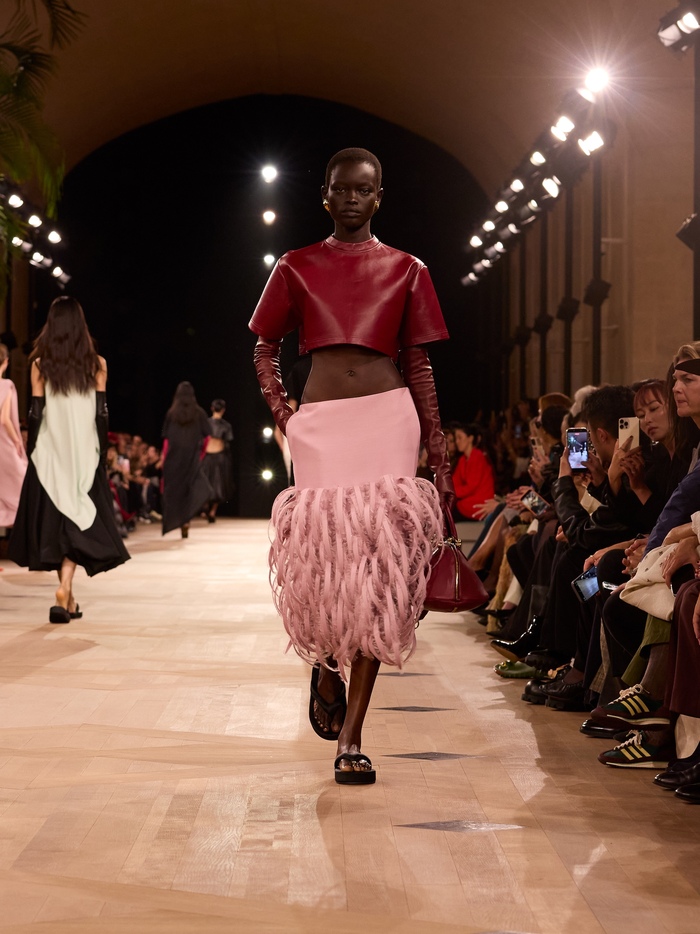
Beneath these design gestures was a deeper conversation with Cristóbal Balenciaga's architectural vision. The founder had always treated clothing as sculpture, studying the interplay between fabric, form, and space. His goal was to liberate the body, creating garments that enveloped rather than constrained. This philosophy led to Balenciaga's tradition of fabric innovation—most notably the Gazar silk developed in 1958, a material that balanced volume with lightness and defined many of the house's 1960s icons.
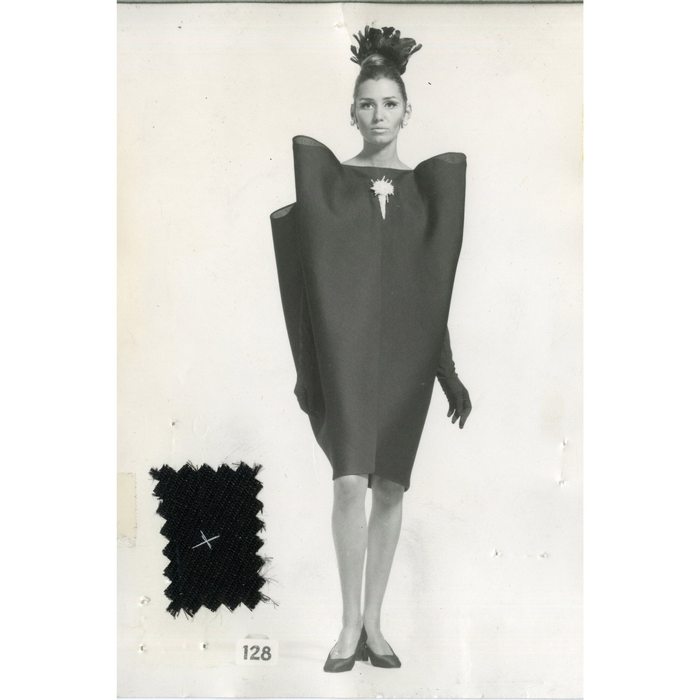
Pierpaolo Piccioli extended this legacy through a new textile innovation: Neo Gazar. While traditional Gazar was woven from slightly twisted crepe yarns combined with organza for structure and texture, Neo Gazar blends silk with fine wool threads to soften the stiffness of the original, achieving the same buoyancy with a more fluid drape—ideal for modern tailoring.
In essence, Pierpaolo Piccioli's debut did not signal a return to Balenciaga's roots but rather a reawakening of its spirit of elegance, simplicity, and precision. "I didn't want to go back to the roots," he said. "I wanted to study the archives and find my own way."
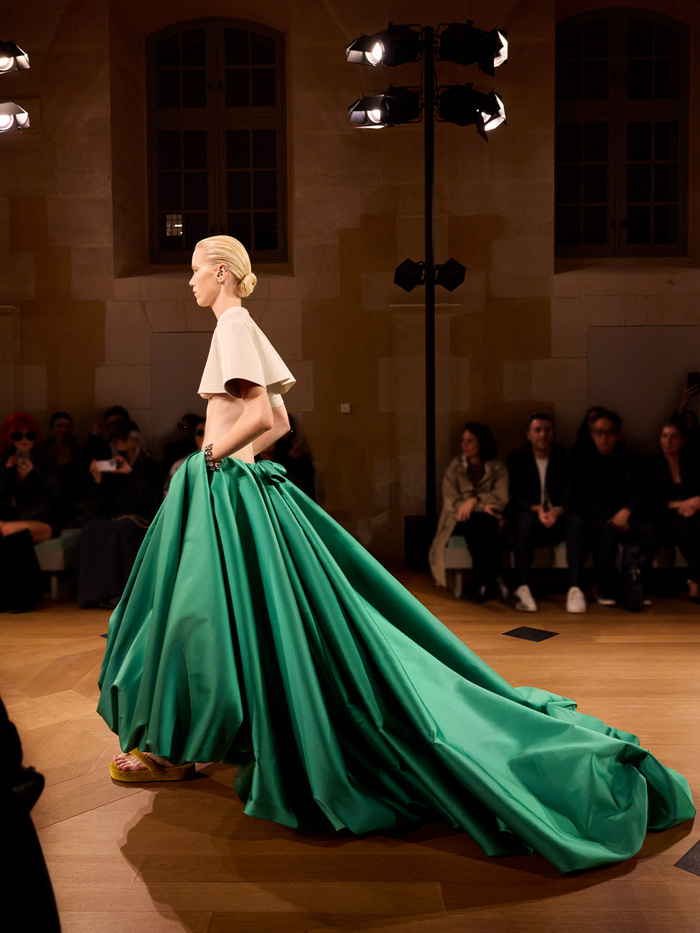

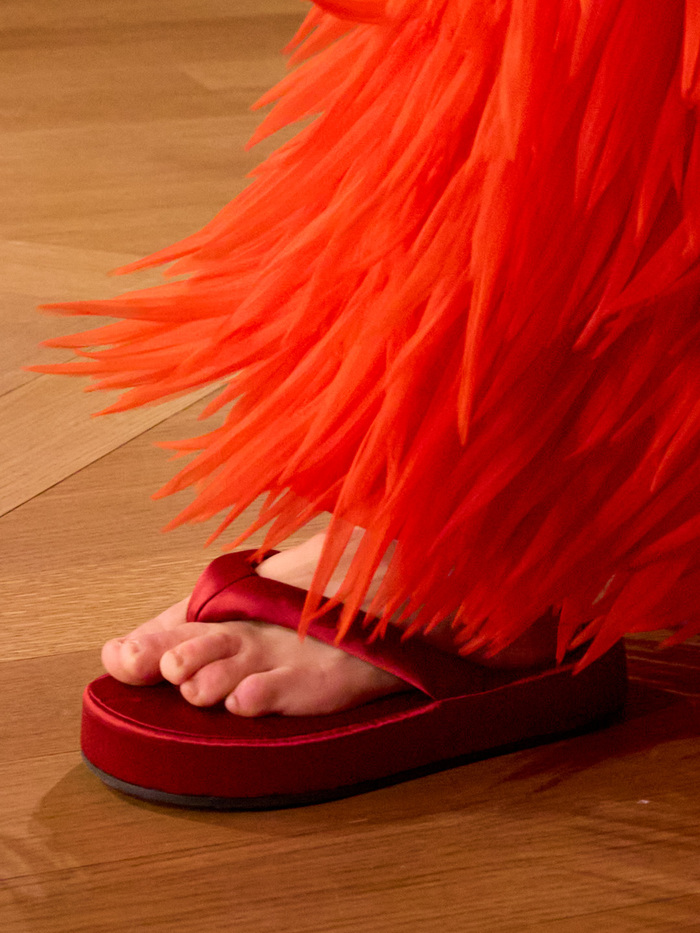
From the audience's perspective, even after dissecting these gestures of homage, one question remains: how will Pierpaolo Piccioli ultimately define and carry Balenciaga's spirit? The answer lies not only in his craftsmanship but also in his personal philosophy—his creative heartbeat.
That metaphor was literal. Pierpaolo Piccioli titled his show The Heartbeat, and both the soundtrack and the invitations featured recordings of his own pulse. To him, the heartbeat symbolizes the shared rhythm of humanity, yet one that beats uniquely in every individual. It reflects his creative ethos—finding universality through deeply personal emotion and expressing individuality within the collective cadence of life.
Two 1960s classics, Feeling Good and Can't Take My Eyes Off You, accompanied the show, both celebrating love, freedom, and joy. The venue was infused with the scent of Balenciaga's new fragrance, Getaria, named after Cristóbal's birthplace on Spain's Basque coast—another tribute linking memory and humanity.
All these details outlined Pierpaolo Piccioli's unmistakable humanist signature. Known for inclusivity and humility, he has long emphasized that "design must serve humanity," and that authenticity moves people more than spectacle. His first show, therefore, retained only measured traces of Demna's aesthetic—a choice some critics saw as restraint but one that aligned with his belief that sincerity outweighs imitation.
Indeed, Pierpaolo Piccioli's humanism can itself be seen as rebellion. In his view, the creative industry is facing its own "Middle Ages," where true creators are no longer at the center. "Putting your faith in humanity," he has said, "is the most radical act one can see today."
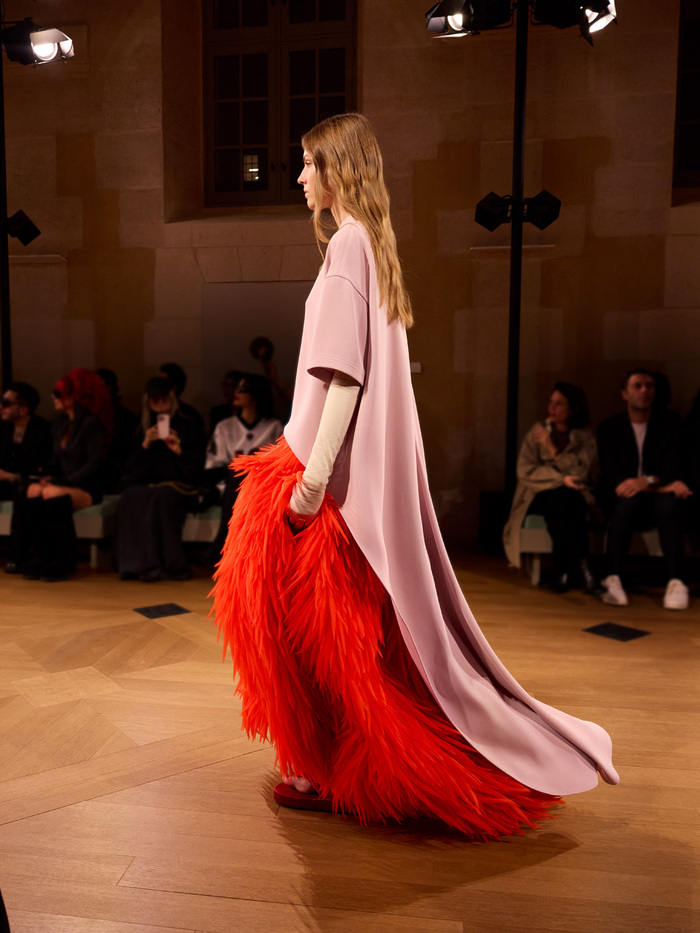
That ideal connects him back to Balenciaga's founding values. Cristóbal's sculptural forms were not made to dominate but to free the body. Demna, decades later, redefined luxury by dissolving hierarchies between couture and streetwear, handing interpretive power to the public. What linked them—beneath their aesthetic differences—was a shared concern for the human experience.
Pierpaolo Piccioli and Demna, despite contrasting styles, share that outsider's perspective. Living quietly in an Italian coastal town, Pierpaolo Piccioli has long viewed fashion from the margins, much like Demna, who once fled conflict as a refugee. Both understand the power of empathy and community—not as a lifestyle to consume but as a collective spirit.
In the years ahead, Pierpaolo Piccioli is expected to amplify this humanist lineage within Balenciaga's DNA. His shift is not a rupture from Demna's deconstructionism but a redirection—from critique of the world outside to introspection within. In an age of noise, turning inward may be the braver act.
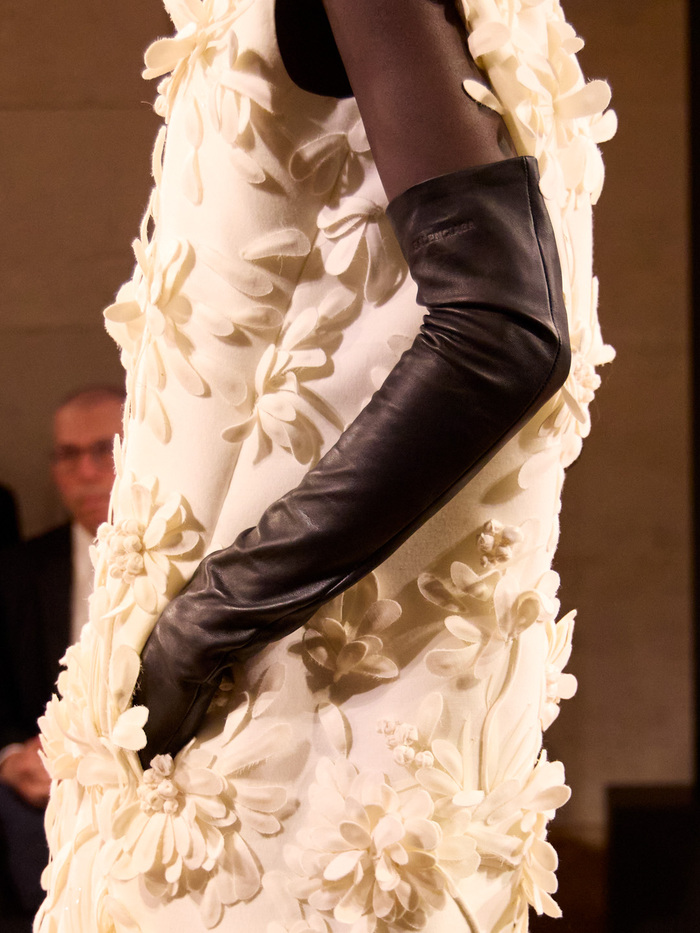
From a business standpoint, this may be exactly what the luxury industry needs. Amid a volatile market, brands seek not quick sales fixes but long-term conviction. Pierpaolo Piccioli's arrival offers such reassurance—a vision grounded in human connection rather than hype.
By anchoring creativity in empathy, he gives Balenciaga a renewable source of inspiration. That approach demands intellectual and artistic depth, but his career credentials—most notably at Valentino—suggest he is more than equipped.
And at a time when grand narratives feel hollow and audiences crave sincerity, Pierpaolo Piccioli's focus on emotional truth resonates deeply. Even the subtlest sense of shared feeling can move mountains.
Humanism, after all, can be a business strategy too. During Demna's tenure, Balenciaga restored and expanded its historic couture salon and atelier in Paris, allowing clients to encounter haute couture up close—an act of democratization that strengthened rather than diminished its aura of exclusivity. By centering the wearer's experience, the brand renewed its relevance for a new era.
Similarly, Pierpaolo Piccioli's ethos of empathy could guide Balenciaga's global dialogue—especially in markets like China, where the brand has deepened ties with major milestones: its Asia debut show—Spring 25 collection at Shanghai's Pudong Art Museum in 2024, the 2025 opening of its largest flagship in Beijing's Sanlitun Taikoo Li, and its upcoming 110th anniversary in 2027.
The future Balenciaga chooses to move hearts quietly and lastingly. In an era defined by noise and distraction, this faith in humanity is itself a form of rebellion—a higher form of presence whose echo will outlast the clamor.